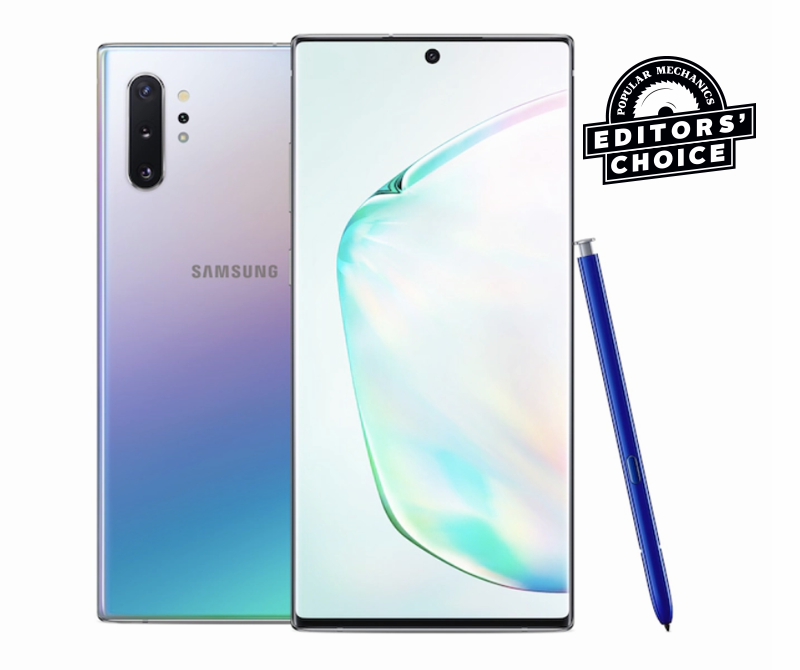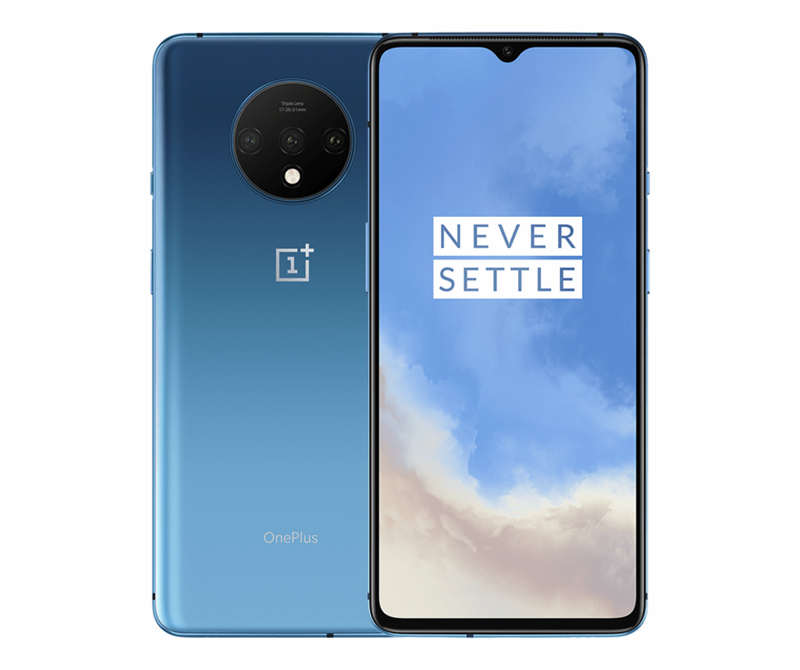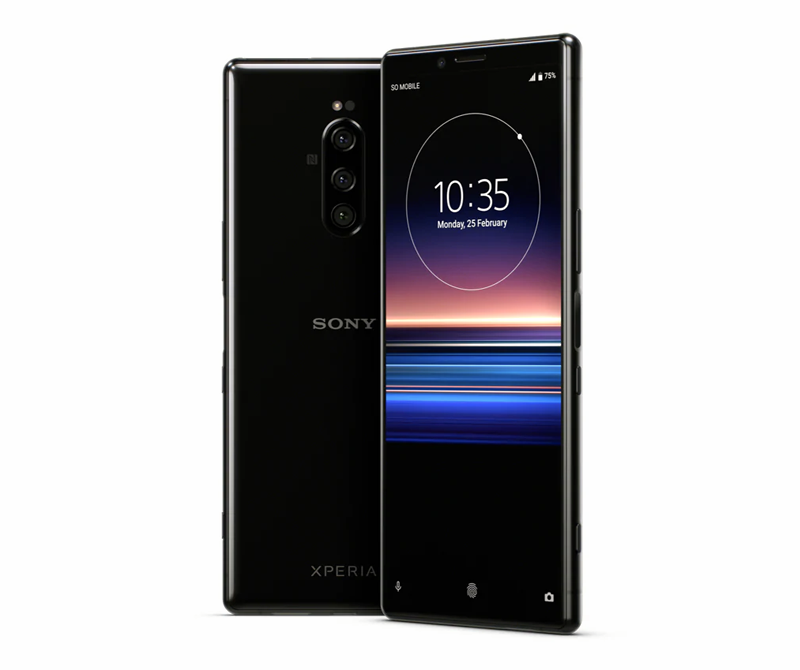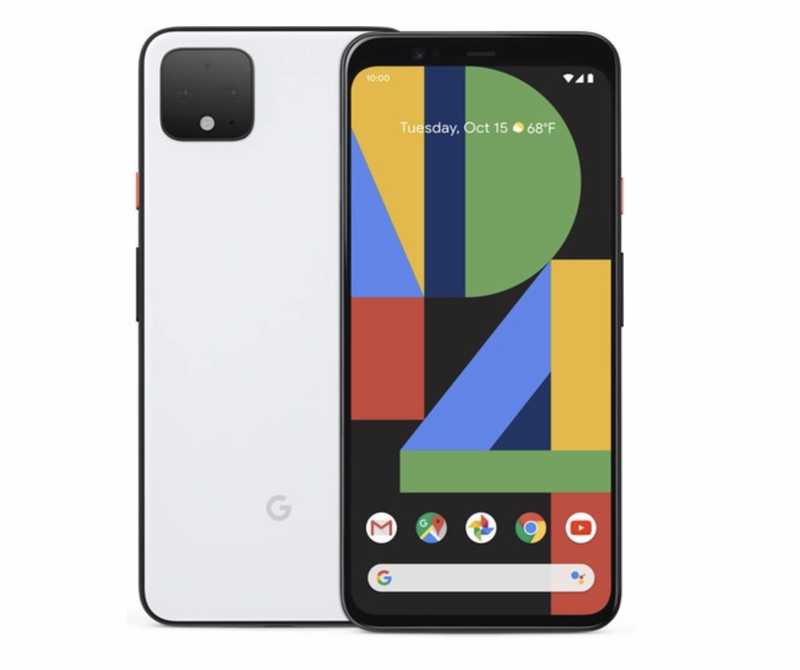The Best Camera Phones, Whether You’re an Apple Fan or Android Adherent

"Hearst Magazines and Yahoo may earn commission or revenue on some items through the links below."
These days, the best camera is often the one in your pocket. No, we don’t mean that the camera in your phone will be able to do everything that a dedicated DSLR would, but it’s always on hand and can get the desired results for most everyday shooting. So we tested a group of the latest and most promising phones in order to determine which are the best.
See quick info below on five of the top performers, then scroll down for buying advice and in-depth reviews of these and other quality phone cameras.
What the Specs Mean
There can be a lot of technical, intimidating terms to parse if you’re not familiar with all the photography talk. Here’s a quick primer on the most important ones.
Pixels: The bits of data that make up a photo and the total number of which in part determines the resolution. Since total pixels can number in the millions (the pixel count of a digital photograph is determined by multiplying the number of pixels across by the number of pixels up and down), a simpler way to display and refer to them is by dividing the total count by a million to get the number of megapixels.
Aperture: This is the opening in the lens through which light passes. It impacts the exposure by allowing more or less light to get through—a larger opening equals more light saturation, and vice versa. Aperture also determines the depth of field, or how in focus the background of a photo is compared to the foreground. Larger aperture results in more background blur (good for portraits), while smaller aperture means less (better for landscapes). Aperture is represented by the f-stop value—like f/2.8 and f/16—where the larger the number after the slash, the smaller the aperture.
ISO: How sensitive a camera’s sensor is to light. Lower numbers are better in full or bright light, while the higher numbers are more suited for darker situations. Boosting the ISO though will result in more pronounced grain (or noise) in the image. A higher ISO setting is often paired with a faster shutter speed so the camera can make the most with the light it’s given in the small time the shutter is open, making it more useful when taking action photos.
Shutter Speed: Basically, the amount of time the shutter’s open. Expressed as a fraction of a second, a shutter speed of 1/1000 will be quicker than 1/60. Faster speeds are better for capturing moving subjects, while anything more than 1/60 is for time lapse or low light.
File Types: Most phones will store the shots from their cameras as JPEG files, which are compressed so they take up less memory and are easier to share. This sacrifices some of the image quality though, and the other most common (and best) option is a RAW file. Without compression, it keeps the information from the original capture so that you can have more flexibility with editing after taking the photo. But RAW photos will hog more memory space and have to be converted before you can post them to social media or text them to friends and family.
The Best Third-Party Camera and Editing Apps
To get the truest experience with each of these phones, we tested them using only their native camera apps. But if you want expanded capability or prefer a different interface, there’s a variety of downloadable apps available.
Adobe Lightroom Mobile (Free)
The Lightroom mobile app offers an advanced camera with manual controls and DNG (Adobe RAW) image capture. The in-app editing is streamlined and, when shooting RAW, offers incredible flexibility to recover details in highlights and shadows, as well as color. If someone is familiar with the Lightroom desktop app, they will find the phone app a nice companion. Lightroom also takes advantage of cloud storage and links up with the corresponding desktop app if you want to view and edit on a computer.Camera+ 2 ($3.99)
Only for iPhones, this is an app for those who want expansive manual controls to play with things like long exposure and simple-to-follow navigate modes such as “action” or “portrait.” The app also has a relatively powerful editing platform built in for messing with effects after shooting.Moment Pro Camera ($5.99)
In-depth manual controls and compatibility with camera add-ons, such as gimbals and Moment’s own lenses, make this app a powerful companion for iOS users. It also affords the ability to create customized presets, but sadly there’s no in-app editing.ProShot ($4.99)
Also available (and cheaper) for Android, ProShot is a good option if you’re looking for RAW capture and additional manual controls.Halide ($5.99)
Other reviewers like Halide for its RAW and good intuitive manual controls. It takes advantage of touch features on iPhones to offer one-handed control.Snapseed (Free)
Snapseed is noteworthy for its easy-to-use interface, variety of built-in filters, and massive selection of editing tools—from simple brightness and contrast adjustments to more advanced sharpness and effect options. It’s a solid choice for editing and processing photos post-shooting, but since it utilizes the iPhone’s camera app to actually take the photos, there are no manual controls or ability for RAW capture.
How We Tested
In preparation, we researched the market, talked with product managers and designers, and used our own experience using phones and the cameras in them to narrow the field. Then we called in a batch of the most promising phones and put them through our battery of tests. First, we snapped photos with each of an ISO 12233 chart to gauge their resolution, focus, and zoom. Then we shot with them in low light, judging how well the cameras compensated for the darkness without flash. Next came the action portions: Inside, we dropped a ball from the same height each time and hit the shutter button in the cameras’ regular setting and again after tweaking the settings manually (if the phones allowed); outside, we had test editor Riley Missel ride a bike past us in bright sunlight as we took her photo. For portraits, we took pictures of social media editor Katie Fogel before photographer Trevor Raab turned the lens on himself to capture selfies. Throughout the process, we evaluated how easy and intuitive the camera apps were to use, what file types the phones saved the photos as, the number of different picture-taking modes available, and whether or not it was easy and simple to share a high-quality photo once we’d taken it.

One thing to keep in mind: This isn’t a ranking. Few people are likely to buy a phone with a different OS from what they’re used to just because of the camera. And, frankly, camera capability today is so good across the board. Every phone here performed well enough to be worthy of your dollars and will be able to get you the shot, it just depends on what you want when it comes to control, number of modes, sharing capability, and so on. So we broke down the top performers below based on their most outstanding feature or use. Peruse the selection here and, if you’re in the market, pick the one that’s best for your needs.
—BEST WITH iOS—
Apple iPhone 11 Pro
Number and types of lenses: 3 rear (wide, ultrawide, telephoto), 1 front | Megapixels: 12 in each | Modes: Time-Lapse, Slo-mo, Video, Photo, Portrait, Pano | Video resolution: 4K up to 60 fps and 1080p HD up to 60 fps for the rear; 4K up to 60 fps, 1080p HD up to 60 fps for the front

iPhone 11 Pro
bestbuy.com
$999.99
bestbuy.comUnsurprisingly, the Apple phone we tested that delivered the best shots was also the highest-end model. (Yes, there is an 11 Pro Max, but other than the larger screen and heavier weight, the specs are the same.) The 11 Pro has an automatic low-light mode, which we were able to override and make use of the adjustable exposure times to collect more light for the shot. And its portrait mode, when we switched to it, was intuitive, with both the rear camera and the front selfie camera recognizing faces. The iPhone allowed us to manually change the aperture while taking portraits, but Apple delivers this functionality through software processing, so the photos we took while tinkering this way came out looking less crisp.
By far the most interesting feature that we noticed during the test, though, was during our action shooting. When we held the ball above the table and dropped it, thinking we were timing the photo to capture the ball when it was equidistant between the table and our hand, the 11 Pro consistently took the photo well before we pressed the shutter button. In some cases, the resulting photos captured the image before the ball had even left our hand. When we followed up with Apple for clarification, they told us that the phone keeps a “rolling buffer of images any time the Camera app is open.” This plays into the Zero Shutter Lag function, which saves “the sharpest frame closest to the time your finger presses down on the shutter so there is no lag in capturing photos.” Meaning in some instances the photo was clearest when the ball hadn’t dropped and wasn’t moving, so that split second before we dropped it was what the iPhone chose to save. Handy, but since we couldn’t manually control the shutter speed in action mode, when we did get the phone to capture the ball in mid-air, it appeared blurry. Though when we were outside photographing Missel riding past us, the shots were clear.
Another thing we found useful: Inside a box on the screen, the Camera app shows you the picture you’ll capture, but outside of the box’s highlighted edges is a shaded area displaying the full camera view. This way you can see if you’re missing something important and move the phone accordingly.
Finally, the 11 Pro supports up to 2x optical zoom. It allows you to zoom in up to 10x, but that’s digital zoom, so don’t expect the same resolution once you go beyond 2x. And despite some lack of pre-shot adjustability, the Pro let us make a lot of tweaks to photos’ contrast, saturation, and definition in post-production.
If you don’t need all that (and want to keep $300 in your pocket), we also tested the iPhone 11 and found it performed many of the same tasks just as well as the Pro. You lose some features, like the 2x optical zoom and one of the rear cameras, but the price tradeoff could be worth it depending on your photography needs.
—BEST BIG DISPLAY—
Samsung Galaxy Note 10+
Number and types of lenses: 4 rear (ultra-wide, wide-angle, telephoto, and DepthVision), and 1 front | Megapixels: 16 in ultra-wide, 12 in wide-angle, 12 in telephoto, 10 in front | Modes: Food, Night, Panorama, Pro, Live Focus, Photo, Video, Live Focus Video, Super Slo-mo, Slow Motion, Hyperlapse | Video resolution: 4K UHD

Galaxy Note 10+
bestbuy.com
$949.99
bestbuy.comBoasting a 6.8-inch display—the biggest screen we tested—the Note 10+ and its Android OS afforded a bit more control than the iPhones. For example, when we were taking our action photos of the ball dropping, the initial shots came out blurry. To be expected, but by taking advantage of the Pro setting, we were able to tweak the ISO to 800 and bump the shutter speed to 1,000, producing a nice crisp shot of the ball in midair.
Though the Note still has its share of user-friendly tech for people who don’t want or need to mess with the finer settings. Samsung’s Scene Optimizer function smoothed out details in the photos. And during the portrait portion of our test, the Note automatically recognized Fogel’s face in Live Focus mode, even when she turned her head to the side. The selfie camera does this too, and the photos came out plenty clear. One other cool bit of functionality Samsung has built into the selfie camera is gesture control; when we held our hand in front of the screen and then moved it away, the Note paused before taking the shot. This eliminated the need for us to reach for the shutter button on the screen and potentially mess up the alignment of the shot as we did. Not a feature that should make or break whether or not you consider this phone, more a handy perk. But we should note that the gesture controls could be a bit finicky and didn’t always work.
The DepthVision camera on the back of the Note is a camera sensor and infrared light sensor pairing that help the phone better distinguish its subject from the background in the shot. This helps with portraits and video and plays into the phone’s Quick Measure function, which shows the dimensions of a certain object you’re focusing on in the frame. This requires a separate app, but it’s a potentially useful tool.
Regarding file saving, while some other phones would save multiple versions of the same photo (like, say, if you took a shot in portrait mode, it would log a shot with background blur and one without for you to choose later which you prefer), the Note doesn’t. Instead, it let us adjust those effects afterward, like the iPhone.
We also tested the smaller Galaxy S10+. It had most of the same functionality as the Note, except instead of a DepthVision camera on the front, it has a second, eight-megapixel selfie camera called RGB Depth, which captures depth for better filters and effects. The phone is also more manageable in the hand and 150 bucks cheaper.
Another note here: While much to-do has been made about the camera on the new Galaxy S20 line, we weren’t able to get our hands on a sample in time for this wave of testing. We’ve got one now, and we’ll update this review later with details.
—BEST VALUE—
OnePlus 7T
Number and types of lenses: 3 rear (main, ultra-wide, telephoto), 1 front | Megapixels: 48 in the main, 8 in telephoto, 16 in ultra-wide, 16 on front | Modes: Video, Photo, Portrait, Nightscape, Pro, Time-Lapse, Panorama, Slow Motion | Video resolution: 4K up to 60 fps for rear, 1080p at 30 fps for front

7T
oneplus.com
$200.00
oneplus.comWith much of the same camera functionality as and comparable specs to the other Android phones on this list, the 7T offers plenty of bang for the buck in the photography department. It has a night mode, and the same Pro mode let us tweak the settings to grab crisp action shots of the dropping ball and Missel on the bike. The 7T autofocused on Fogel’s face naturally. And when we switched to the dedicated portrait mode, it gave us the option to take an individual or group shot so the digital bokeh effect didn’t blur out anyone on the periphery. That’s handy, considering you can’t adjust the focus of the shot once you’ve taken it. The front selfie camera—which had the second most megapixels of any in the test—worked similarly, recognizing faces and boasting its own portrait mode that provides that nice blur. In fact, when we first used the selfie camera, we were shocked at how much detail it picked up on our faces.
Other than that, the 7T has 2x optical zoom, a solid night mode, and a pro mode that, among other things, lets you know if the shot you’re taking is level. The macro mode, which lets you get extremely detailed close-up shots, was impressive, too. Despite its lower price, this OnePlus phone doesn’t sacrifice much.
—BEST FOR PORTRAITS—
Sony Xperia 1
Number and types of lenses: 3 rear (super wide-angle, wide, telephoto); 1 front | Megapixels: 12 in each rear, 8 in front | Modes: Portrait Selfie, Google Lens, Slow Motion, AR Effect, Manual, Creative Effect, Panorama | Video resolution: 4K HDR

Xperia 1
bestbuy.com
$649.99
bestbuy.comGiven the company’s pedigree in the standalone camera space, we expected a lot from Sony and its Xperia 1. And both delivered.
Portrait mode was fantastic. The Xperia focused specifically on Fogel’s eyes, and its autofocus brought the image into crisp clarity very quickly. Its camera even stayed locked onto her eyes when she turned her head to the side. The selfie camera only locks onto faces, but still had a somewhat weird fascination with our eyes; looking at one shot, our eyes appeared distorted and oddly enhanced. (We later found the “eye enlargement” setting and were able to tone it down, but even on low, our eyes looked a bit too big. And one time using the “slender face” feature and seeing how it thinned out our chin and neck was enough for us to never tough it again.) On the plus side, the Xperia allowed us to operate the selfie camera via hand gestures, even if it proved a bit hard to get the hang of getting it to reliably work.
The Xperia 1 doesn’t have a dedicated low-light setting, though it let us lengthen the exposure to compensate via its manual mode. Operating the camera manually during the action shot portion of the test was simple too; when we were photographing Missel riding past us, we went to adjust the shutter speed and a scale appeared with a running stick figure on one end and a stick figure standing still on the other. So it’s straightforward for people who may not be familiar with camera numbers and specs to see which setting is most appropriate for the photo they’re trying to take.
Another feature we liked: the shutter button on the side of the phone, which allowed easy and quick access to the camera. Similarly, when you lift the phone in landscape view, it launches the camera.
—BEST ADD-ON—
LG G8X ThinQ
Number and types of lenses: 2 rear (standard, wide), 1 front | Megapixels: 12 in standard, 13 in wide, 32 (with binning) in front | Modes: Studio, Portrait, Photo, Video, Manual Camera, Night View, Panorama, Story Shot, Manual Video, Slow-mo, Time Lapse, Flash Jump-cut, YouTube Live | Video resolution: 4K at 60 FPS

G8X ThinQ Dual Screen
bestbuy.com
$499.99
bestbuy.comLG’s G8X ThinQ looks pretty modest on paper, with only three lenses and 12 and 13 megapixels in the standard and wide rear lenses, respectively. Though the 32 pixels on the selfie camera seems pretty high, those pixels are “binned,” or grouped so that the data from the individual pixels are combined, resulting in an eight-megapixel photo once you take the shot.
But the phone stands out when it has the Dual Screen attached. Pop the G8X into this case/second screen to give it twice the visual real estate, opening up some cool functionality when it comes to taking photos (and playing games, but that’s for another time and a different review). It lets you edit photos on one screen while you have the original open on the other for reference, or you can keep the camera open on one screen and immediately see the photo you just took on the other without having to swipe or close out to another screen and back. The second screen’s Dual Mirror mode acts as a double viewfinder, showing you what the main phone’s cameras are picking up if you can’t see it directly—like, say, if you hold it up for a bird’s-eye view of something, you can hinge the second screen to see what the camera does without having to physically be above your phone looking down at it.
Outside of the Dual Screen’s tricks, the G8X performed well enough in our tests. It did have a similar shutter effect to the iPhone of capturing the photo before we’d hit the button, just not as drastic. And it let us tweak the settings to the shot via the Manual Camera mode. During the portrait portion, an “AI composition will be applied” alert popped up when the camera recognized a face in the frame to let us know that the software was automatically smoothing out features and details. While many of the other phones do the same, it was nice to have a heads up. And the selfie camera gave us the option to let it take care of the retouching or for us to do it manually. The portrait mode also let us control the bokeh in the process of taking the shot, but it lets you edit it in afterward, too.
One usability feature we appreciated was how, when we were scrolling back through the photos we’d taken, the phone let us quickly click through to see related pictures based on criteria like the dates they were taken and whether or not Ai composition was applied.
Really, if you’re considering buying the G8X, do it for the second screen. You can always pop your phone out of the attachment if you occasionally want a little less bulk.
—GOOD FOR BEGINNERS—
Google Pixel 4 XL
Number and types of cameras: 2 rear (regular, wide), 1 front | Megapixels: 16 in regular, 12.2 in wide, 8 in front | Modes: Camera, Portrait, Night Sight, Video, Panorama, Photo Sphere, Slow Motion, Time Lapse, Google Lens | Video resolution: 1080p up to 120 fps, 720p at 240 fps, and 4K at 30 fps for rear; 1080p at 30 fps for front

Pixel 4 XL
bestbuy.com
$849.99
bestbuy.comThe Pixel 4 XL earned its spot here for how it plainly but unobtrusively provided tips to improve our photos during the shooting process. When we were taking shots in low light, a notification popped up recommending that we switch to Night Sight mode. (We then had to hold the phone still while the phone lengthened the exposure to gather more light, though the photo still came out grainy.) And when we took selfie portraits, the Pixel advised us to raise the phone for a better angle. If we took the photos in portrait mode, the phone saved two versions—one with processing and bokeh added and one without—so we could pick from the two. (It didn’t do this when we snapped selfies in the regular camera mode.)
Assistance aside, the portraits themselves came out OK. There didn’t appear to be much of a difference between the three available levels of face retouching, and selfies appeared somewhat distorted when taken in regular camera mode, although the camera did a fine job of automatically recognizing and focusing on faces in both camera and portrait modes. Action performance could have been better, too; the Pixel’s native camera app doesn’t have any manual or pro mode to let us fine-tune the settings—the only Android phone on this list not to—so we were left with a blurry picture of the falling ball. But switching between modes was easy by simply swiping left and right on the screen.
When we were scrolling through the photos in the camera app, the Pixel clearly shows you which mode the shot was taken in, if any. To be fair, the iPhone does this too, and it eliminated some guesswork as we flipped through our photos.
It’s worth noting here that the regular, non-XL Pixel 4 has all the same camera specs, so depending on your smartphone needs outside of the camera, it could be worth considering the smaller, $100-cheaper model.
You Might Also Like

